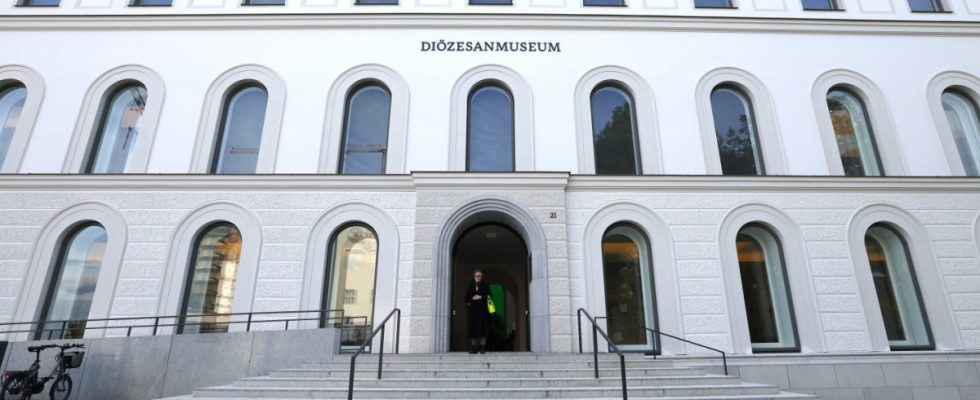The world keeps turning. If, as in the case of the Freising Diocesan Museum on Domberg, you wake up after almost ten years of slumber, you cannot continue where you left off. Museum director Christoph Kurzder was faced with this situation when it became clear that the closure of the house ordered at short notice in 2013 would not be short-lived. He had taken over the museum just a year earlier. The ecclesiastical collection of the Archdiocese has long had a reputation. But the building had lost its luster over the years. “When I came, it was a dark box that didn’t really know what it was supposed to be,” says Kurzeder.
There was another problem: the museum, which opened in 1974 and was set up in 1870 as an episcopal boys’ seminary, did not have any permission. There were also significant deficiencies in fire protection. The city of Freising, as the responsible approval authority, prohibited operation overnight.
73 million euros comprehensive renovation
The time after that turned into a hard struggle for Christoph Kurzeder and his team. The project almost failed. There were heated debates in the Freising city council because the planners wanted to do without an octagonal tower, the so-called toilet tower, when renovating the Diocesan Museum. In 1876/77, for hygienic reasons, this had been attached to the boys’ seminary that had been built six years earlier. The Archdiocese reacted with a sniffle and quite bluntly indicated that the Diocesan Museum could also be built elsewhere – in Munich, for example. Fortunately it didn’t come to that.
Because now, after the 73 million euro comprehensive renovation, not only Freising has a museum to be proud of, but all of Bavaria. On October 2nd, 2022 the time had come. The doors opened and the motto was: “As always. Only new.” The courage of the architectural office Brückner & Brückner from Tirschenreuth amazed everyone. Nothing is reminiscent of the episcopal boys’ seminary. Light, air and space have drawn in through the floor-to-ceiling arched windows. You can look out, look in and look through everywhere. Transparency is the word that describes this museum. The exhibition concept is based on this.
Christoph Kurzder wants to answer the questions that are on people’s minds now, he wants to pick them up from where they are now. That is why they are no longer greeted in the former chapel in the auditorium by an oversized image of the Virgin Mary, a lady with blonde curly hair who was showered with roses. Instead, the American light artist James Turrell created a permanent light installation for this room, to which visitors now flock from far and wide. That’s why the special exhibition “Damned Lust! Church. Body. Art” is currently running in the house, which explores the church’s relationship to sexuality in art and cultural history. That is why the larger-than-life Archangel by the Belgian sculptor Berlinde De Bruyckere stands in the auditorium in sackcloth and ashes, barefoot, his head covered with a cloth. He is tired and exhausted after almost three years of pandemic, climate change, environmental disasters and wars that threaten his existence. The world just keeps turning.
More information at https://www.dimu-freising.de

